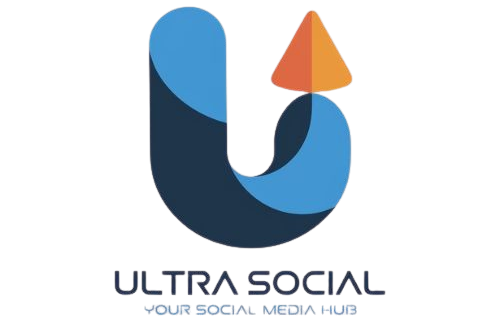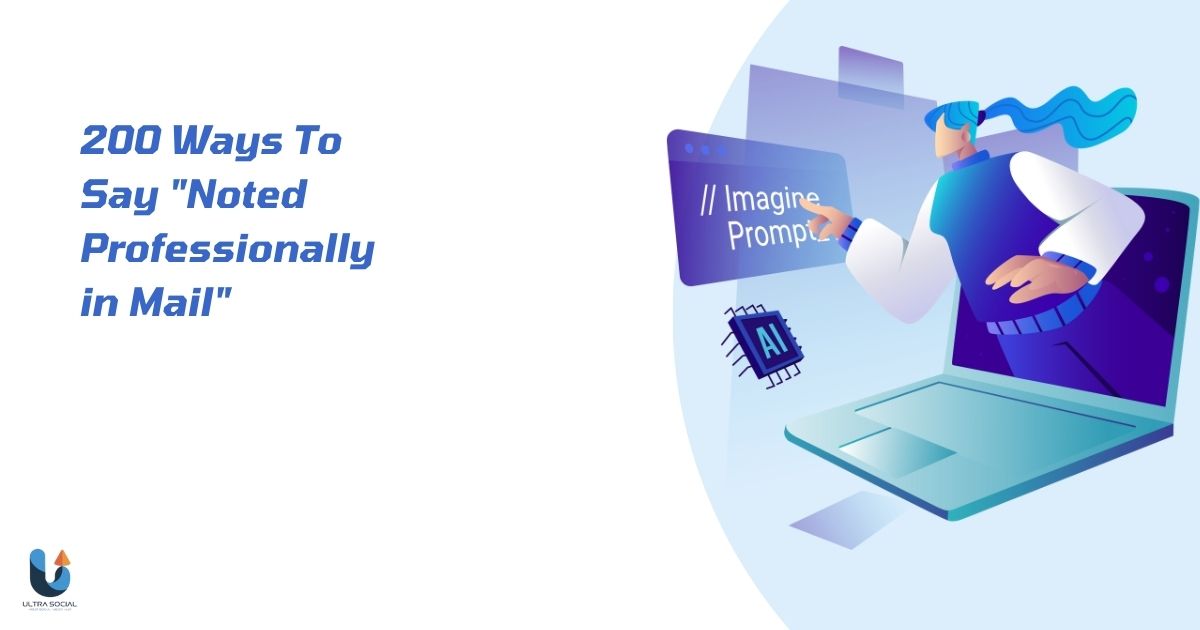In today’s fast-paced professional landscape, the way you communicate can make all the difference. Simply saying “noted” can feel stale and uninspired. Imagine captivating your readers with fresh and engaging alternatives that not only acknowledge receipt but also convey your commitment to effective communication.
This article unveils over 200 dynamic phrases to replace “noted” in your emails. Whether you want to sound more professional or simply wish to keep your correspondence lively, these alternatives will help you express acknowledgment with flair and maintain a polite, polished tone. Say goodbye to monotony and hello to impactful communication!
The Importance of Professional Communication

Email remains a cornerstone of business correspondence. How we express ourselves in writing can significantly impact our professional relationships and reputation. Let’s dive into various ways to say “noted professionally in mail,” enhancing your communication skills and email etiquette.
- “I’ve received your message and will act accordingly.”
- “Your input has been registered and will be considered.”
- “I acknowledge your email and appreciate the information provided.”
- “Thank you for bringing this to my attention.”
- “I’ve taken note of your request and will follow up promptly.”
- “Your message has been duly recorded in our system.”
- “I’ve logged your feedback for further review.”
- “Rest assured, I’ve captured the details you’ve shared.”
- “Your points have been added to our discussion agenda.”
- “I’ve made a note of your concerns for our next meeting.”
Polite and Formal Phrases
When aiming for a respectful acknowledgment in your email responses, consider these alternatives to “noted professionally in mail”:
- “I appreciate you keeping me informed on this matter.”
- “Your message has been received and will be given due consideration.”
- “Thank you for bringing this to our attention. It’s been noted professionally in the mail.”
- “I’ve recorded your input for our upcoming discussion.”
- “Your feedback has been logged in our system for review.”
- “We’ve taken your comments into account. Thank you for sharing.”
- “I’ve made a note of your suggestions for future reference.”
- “Your insights have been added to our project documentation.”
- “We’ve acknowledged receipt of your valuable information.”
- “Your message has been duly noted professionally in mail in our correspondence records.”
Expressing Agreement
Sometimes, you need to convey understanding and agreement in your business correspondence:
- “I concur with your assessment and have noted it professionally in mail.”
- “Your points are well-taken and have been recorded.”
- “I’m in agreement with your proposal and have noted it down.”
- “Your perspective aligns with ours. It’s been duly noted professionally in mail.”
- “We’re on the same page. I’ve made note of our shared viewpoint.”
- “Your ideas resonate with our goals. They’ve been noted professionally in mail for implementation.”
- “I’ve recorded your suggestions, which complement our strategy nicely.”
- “Your input harmonizes with our vision. It’s been noted professionally in mail for action.”
- “We’re in sync on this matter. I’ve noted our mutual understanding.”
- “Your thoughts echo our sentiments. They’ve been recorded for reference.”
Related Guide:
200+ Replies to “All The Best” | Finest Collection
Conveying Understanding
Demonstrating that you’ve grasped the message is crucial in professional reactions:
- “I’ve processed the information you’ve shared and made appropriate notes.”
- “Your message has been comprehended and documented on my end.”
- “I understand the points you’ve raised and have noted them professionally in mail.”
- “The details you’ve provided have been absorbed and recorded.”
- “I’ve internalized your feedback and made relevant notes for follow-up.”
- “Your explanation has been understood and logged for future reference.”
- “I’ve grasped the essence of your message and noted it professionally in the mail.”
- “The nuances of your proposal have been comprehended and documented.”
- “I’ve taken in the information and made comprehensive notes.”
- “Your insights have been understood and recorded in our project files.”
Adding Personal Touch
Infusing a bit of personality can make your email responses more engaging:
- “I’ve jotted down your brilliant ideas for our next brainstorming session.”
- “Your thoughts have been etched into my mental notepad. Thanks!”
- “I’ve tucked away your suggestions in my ‘great ideas’ folder.”
- “Your input is gold. I’ve added it to our treasure trove of insights.”
- “I’ve made a mental sticky note of your fantastic proposal.”
- “Your wisdom has been captured and filed under ‘genius ideas’.”
- “I’ve bookmarked your suggestions in my priority to-do list.”
- “Your thoughts are now residing in the VIP section of my notes.”
- “I’ve given your ideas a special place in our project’s hall of fame.”
- “Your insights are now part of my ‘inspiration for success’ collection.”
Tailoring Responses to Context
Adapting your acknowledgment to the specific situation enhances effective communication:
- “I’ve noted professionally in mail your urgent request and will prioritize it accordingly.”
- “Your deadline has been acknowledged and added to our project timeline.”
- “I’ve recorded your concerns and will address them in our next meeting.”
- “Your budget constraints have been noted professionally in mail and will guide our planning.”
- “I’ve logged your preferences for future reference in our collaboration.”
- “Your specific requirements have been noted professionally in mail and will shape our approach.”
- “I’ve documented your feedback to inform our quality improvement process.”
- “Your market insights have been noted professionally in mail and will influence our strategy.”
- “I’ve recorded your availability for scheduling our upcoming sessions.”
- “Your technical specifications have been noted professionally in mail for our development team.”
Dos and Don’ts
Understanding the nuances of professional communication can elevate your email etiquette:
- “I’ve taken note of your guidelines and will adhere to them strictly.”
- “Your do’s and don’ts have been recorded for our team’s reference.”
- “I’ve noted professionally in mail your preferences and will ensure compliance in our work.”
- “Your protocol has been acknowledged and added to our best practices.”
- “I’ve documented your instructions to guide our future interactions.”
- “Your operational standards have been noted professionally in mail and will be implemented.”
- “I’ve recorded your policies to ensure we maintain professional standards.”
- “Your ethical guidelines have been noted professionally in mail and will shape our conduct.”
- “I’ve logged your expectations to align our performance accordingly.”
- “Your quality benchmarks have been noted professionally in the mail for our continuous improvement.”
Tips for Effective Communication
Enhancing your communication skills can lead to more impactful business correspondence:
- “I’ve noted professionally in mail your communication style and will adapt accordingly.”
- “Your feedback on our exchanges has been recorded for improvement.”
- “I’ve documented your preferred communication channels for future use.”
- “Your suggestions for clearer messaging have been noted professionally in mail and appreciated.”
- “I’ve logged your tips on effective email writing for our team.”
- “Your insights on active listening have been noted professionally in mail for implementation.”
- “I’ve recorded your advice on concise communication for our staff.”
- “Your guidelines on professional tone have been noted professionally in mail and will be followed.
- “I’ve documented your strategies for more engaging correspondence.”
- “Your recommendations for improved team communication have been noted professionally in mail.”
Handling Follow-Up Queries
Addressing potential follow-ups demonstrates proactiveness in your email responses:
- “I’ve noted professionally in mail your query and will research before providing a full response.”
- “Your follow-up questions have been logged for a comprehensive reply.”
- “I’ve recorded your request for clarification and will address it soon.”
- “Your additional inquiries have been noted professionally in mail for our upcoming discussion.”
- “I’ve documented your need for more details and will gather them promptly.”
- “Your request for examples has been noted professionally in mail; I’ll include them in my response.”
- “I’ve logged your request for supporting data and will compile it for you.”
- “Your call for a more in-depth explanation has been noted professionally in mail and accepted.”
- “I’ve recorded your interest in further exploration of this topic.”
- “Your desire for a step-by-step breakdown has been noted professionally in mail and will be provided.”
Maintaining a Positive Tone
Keeping your email correspondence upbeat can foster better professional relationships:
- “I’ve happily noted professionally in mail your suggestions and look forward to implementing them.”
- “Your innovative ideas have been joyfully recorded for our next project.”
- “I’ve enthusiastically logged your proposal for our team’s consideration.”
- “Your positive feedback has been noted professionally in the mail with great appreciation.”
- “I’ve gladly taken note of your constructive criticism for improvement.”
- “Your encouraging words have been noted professionally in the mail and will boost our morale.”
- “I’ve optimistically recorded your vision for our future collaboration.”
- “Your energetic input has been noted professionally in mail and will invigorate our approach.”
- “I’ve cheerfully documented your success stories for our inspiration.”
- “Your uplifting message has been noted professionally in mail and will drive our progress.”
Cultural Sensitivity
Acknowledging messages with cultural awareness is crucial in global business correspondence:
- “I’ve noted professionally in mail your cultural insights and will incorporate them respectfully.
- “Your guidance on local customs has been recorded for our team’s reference.”
- “I’ve documented your advice on culturally appropriate communication.”
- “Your tips on international business etiquette have been duly noted professionally in mail.”
- “I’ve logged your suggestions for more inclusive language in our correspondence.”
- “Your insights on cross-cultural negotiations have been noted professionally in mail for future use.”
- “I’ve recorded your recommendations on global team management.”
- “Your advice on avoiding cultural faux pas has been noted professionally in mail and appreciated.”
- “I’ve documented your observations on cultural differences in business practices.”
- “Your guidance on culturally sensitive marketing has been noted professionally in mail for our campaign.”
Practicing Active Listening
Demonstrating active listening skills in your email responses enhances understanding:
- “I’ve carefully noted professionally in mail your concerns and will address each point.”
- “Your detailed explanation has been attentively recorded for action.”
- “I’ve thoroughly documented your perspective for our team’s consideration.”
- “Your nuanced argument has been noted professionally in mail with full attention to detail.”
- “I’ve diligently recorded your feedback for our improvement process.”
- “Your complex issue has been noted professionally in mail, and I’ll respond after careful analysis.”
- “I’ve meticulously logged your multi-faceted proposal for review.”
- “Your subtle hints have been noted professionally in mail and will guide our approach.”
- “I’ve conscientiously documented your underlying concerns for discussion.”
- “Your implied suggestions have been noted professionally in mail and will be tactfully addressed.”
Review and Revision
Acknowledging the need for review and potential revisions shows professionalism:
- “I’ve noted professionally in mail your revisions and will update our documents accordingly.”
- “Your suggested changes have been recorded for our next draft.”
- “I’ve logged your feedback for incorporation in the revised version.”
- “Your editorial comments have been noted professionally in mail and will guide our rewrite.”
- “I’ve documented your proposed amendments for our review process.”
- “Your recommendations for improvement have been noted professionally in mail for implementation.”
- “I’ve recorded your critique for a thorough revision of our proposal.”
- “Your observations on areas needing refinement have been duly noted professionally in mail.”
- “I’ve logged your suggestions for enhancing our presentation’s clarity.”
- “Your insights for polishing our final draft have been noted professionally in mail and appreciated.”
By incorporating these varied ways to say “noted professionally in mail,” you can enhance your business correspondence and demonstrate your commitment to effective communication. Remember, the key is to choose phrases that fit the context and maintain a professional yet personable tone in your emails.
Common Alternatives to “Noted Professionally in Mail”
Expanding your vocabulary for acknowledgment can enhance your professional communication:
- “I’ve registered your input and will factor it into our decisions.”
- “Your message has been acknowledged and will inform our next steps.”
- “I’ve recorded your statement and will respond in due course.”
- “Your communication has been recognized and added to our agenda.”
- “I’ve logged your observation for our upcoming review session.”
- “Your point has been captured and will be addressed promptly.”
- “I’ve documented your concern for immediate attention.”
- “Your request has been registered in our task management system.”
- “I’ve archived your suggestion for future consideration.”
- “Your feedback has been cataloged for our continuous improvement efforts.”
Expressing Understanding
Conveying that you’ve grasped the message is crucial in business correspondence:
- “I’ve internalized your perspective and will reflect it in our approach.”
- “Your viewpoint has been absorbed and will shape our strategy.”
- “I’ve assimilated your ideas into our project framework.”
- “Your concept has been digested and will influence our decision-making.”
- “I’ve processed your feedback and will integrate it into our plans.”
- “Your insights have been comprehended and will guide our actions.”
- “I’ve grasped the essence of your message and will act accordingly.”
- “Your explanation has been understood and will inform our next move.”
- “I’ve taken in your advice and will apply it to our methodology.”
- “Your input has been fully appreciated and will be put to good use.”
Adding Personal Touch
Infusing personality into your email responses can make them more engaging:
- “I’ve mentally bookmarked your brilliant suggestion for future reference.”
- “Your idea has been filed in my ‘genius concepts’ folder. Thanks!”
- “I’ve etched your wisdom into my professional memory bank.”
- “Your insights are now part of my ‘innovation inspiration’ collection.”
- “I’ve given your proposal a VIP spot in my priority tasks.”
- “Your thoughts have been added to my ‘game-changing ideas’ list.”
- “I’ve stored your suggestion in my mental ‘treasure chest’ of solutions.”
- “Your concept has earned a gold star in my project notebook.”
- “I’ve pinned your idea to the top of my ‘must-implement’ board.”
- “Your input has been enshrined in my hall of ‘brilliant business ideas’.”
Tailoring Responses to Context
Adapting your acknowledgment to the specific situation enhances effective communication:
- “I’ve noted professionally in mail your urgent request and will expedite our response.”
- “Your project timeline has been acknowledged and integrated into our schedule.”
- “I’ve recorded your budget constraints and will adjust our proposal accordingly.”
- “Your quality standards have been noted professionally in mail and will guide our production process.”
- “I’ve logged your technical specifications for our development team’s reference.”
- “Your market insights have been noted professionally in mail and will inform our strategic planning.”
- “I’ve documented your compliance requirements for our legal team’s review.”
- “Your customer feedback has been noted professionally in mail and will drive our service improvements.”
- “I’ve recorded your preferences for future collaborations and partnerships.”
- “Your performance metrics have been noted professionally in mail and will shape our evaluation process.”
Dos and Don’ts
Understanding the nuances of professional communication can elevate your email etiquette:
- “I’ve noted professionally in mail your communication guidelines and will adhere to them strictly.”
- “Your protocol for project updates has been recorded for our team’s reference.”
- “I’ve documented your preferred meeting structure for future sessions.”
- “Your dos and don’ts for client interactions have been noted professionally in mail and will be followed.”
- “I’ve logged your expectations for report formats and will comply accordingly.”
- “Your standards for professional conduct have been noted professionally in mail for our staff training.”
- “I’ve recorded your policies on data privacy and will ensure full compliance.”
- “Your guidelines for social media usage have been noted professionally in mail for our marketing team.”
- “I’ve documented your preferences for conflict resolution in our organization.”
- “Your best practices for remote work have been noted professionally in mail and will be implemented.”
Tips for Effective Communication
Enhancing your communication skills can lead to more impactful business correspondence:
- “I’ve noted professionally in mail your tips on concise writing and will apply them in future emails.”
- “Your advice on active listening has been recorded for our team’s development.”
- “I’ve documented your strategies for more engaging presentations.”
- “Your insights on cross-cultural communication have been noted professionally in mail for our global team.”
- “I’ve logged your techniques for effective virtual meetings.”
- “Your recommendations for clearer technical writing have been noted professionally in mail.”
- “I’ve recorded your approach to giving constructive feedback.”
- “Your methods for facilitating productive brainstorming sessions have been noted professionally in mail.”
- “I’ve documented your tips on maintaining professionalism in casual settings.”
- “Your strategies for navigating difficult conversations have been noted professionally in mail.”
Handling Follow-Up Queries
Addressing potential follow-ups demonstrates proactiveness in your email responses:
- “I’ve noted professionally in mail your request for clarification and will provide details shortly.”
- “Your follow-up questions have been logged for a comprehensive response.”
- “I’ve recorded your need for additional examples and will include them.”
- “Your request for supporting data has been noted professionally in mail and is being compiled.”
- “I’ve documented your interest in a more in-depth analysis of the topic.”
- “Your inquiry about potential implications has been noted professionally in mail for discussion.”
- “I’ve logged your request for a step-by-step breakdown of the process.”
- “Your questions about alternative scenarios have been noted professionally in mail for exploration.”
- “I’ve recorded your interest in comparative studies on this subject.”
- “Your request for expert opinions has been noted professionally in mail and will be addressed.”
FAQ’S
Why is it important to use alternatives to “noted” in professional emails?
Using varied phrases enhances clarity and engagement in communication, showing that you value the sender’s message and fosters a more professional tone.
Can I use these alternatives in informal communication as well?
While these alternatives are tailored for professional correspondence, many can also be adapted for informal settings, depending on the relationship with the recipient.
How do I choose the right phrase from the list?
Consider the context of the communication, the relationship with the recipient, and the message’s tone to select an appropriate phrase that fits the situation.
Are these alternatives suitable for all industries?
Most alternatives are versatile and can be applied across various industries, though it’s wise to be aware of specific industry norms and etiquette.
Can using varied phrases improve my professional relationships?
Yes, incorporating diverse expressions can enhance your communication skills, demonstrating attentiveness and professionalism, which positively impacts relationships.
Conclusion
Mastering the art of saying “noted professionally in mail” is a valuable skill in business correspondence. By varying your acknowledgment phrases, you demonstrate attentiveness, professionalism, and strong communication skills. Remember, the key is to tailor your response to the context while maintaining a polite and engaging tone.
These 200+ alternatives provide a comprehensive toolkit for acknowledging messages in your professional emails. By incorporating these phrases into your communication, you can enhance your email etiquette, build stronger professional relationships, and ensure that your messages are both noted and appreciated.
Related Guide:
220+ Flirty Answers to “How Was Your Night?” to Impress
200 Motivational Messages for a “Hardworking Boyfriend”
200+ Best Replies to “What’s Good?” – (WSG)
200+ Replies to “Congratulations” Messages
When someone asks “How Is Your Day Going?” : 200+ Replies

As a seasoned content writer with five years of experience, I specialize in crafting engaging and SEO-friendly website content that resonates with audiences. My passion lies in transforming complex ideas into clear, compelling narratives that drive traffic and conversions. With a keen eye for detail and a deep understanding of digital marketing, I help brands tell their stories effectively. Whether it’s blog posts, web copy, or social media content, I strive to deliver quality that captivates readers and enhances online presence.







![195 Short Prayers For [Safe Travel] & [Protection] For All Prayers For [Safe Travel] & [Protection] For All](https://ultrasocail.com/wp-content/uploads/2025/02/Prayers-For-Safe-Travel-Protection-For-All-300x158.jpg)